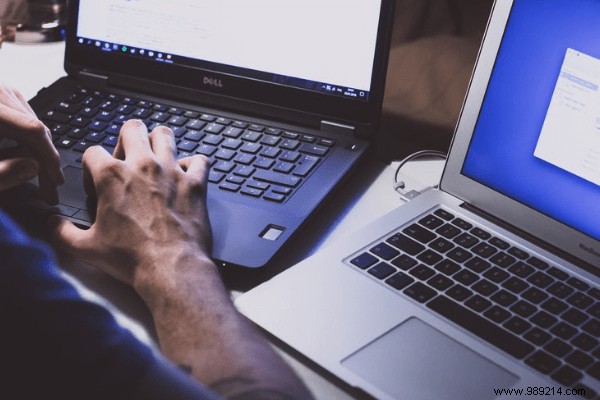As an information security officer, an entire organization relies on you to create safe spaces for the use of valuable technology. It is therefore essential that you know how you can start protecting your network. A single breach or malicious attack can disrupt critical services. This can lead to immediate loss of revenue and have a lasting negative effect on the reputation of the business.
ContentsReduce Software RiskMonitor Insider ThreatsStop WebRTC LeaksSecure Mobile DevicesLeverage Automation and Machine LearningA CISO's mindset should have a 360-degree approach to technology, looking for potential threats and vulnerabilities from all angles. They must also keep abreast of the latest emerging technologies, both those that could harm their business and those that could help protect it.
Below is a set of tips for the modern CISO on how you can start protecting your network and organization against the most dangerous forms of cybercrime and cyberattacks.

A simple web or mobile app can require millions of lines of code. And all it takes is a security breach for the company to risk losing data, time and money.
These days, hackers will attempt to infiltrate public websites through SQL injections and cross-site scripting (XSS) attacks. Their goal is to corrupt or expose information stored on backend servers.
As the leader of the technology organization, the CISO must make cybersecurity a key pillar of the company's overall strategy. This approach should be passed on to all engineering managers and reinforced to developers as well.
Significant investments should be made in the area of quality assurance. However, keep in mind that even the best code testers will not discover all bugs or security gaps.
You usually imagine a hacker as a shady criminal working with a rogue government or other unauthorized organization. And while these types of individuals certainly pose a threat to businesses, the reality is that many of the worst data breaches in recent history have come from insider threats.
Depending on their role and level of access, disgruntled employees can cause serious damage to hardware, software, and the corporate network itself. These types of incidents can be incredibly difficult to predict or trace until it is too late.
For starters, the CISO should preach a belief in minimal access permissions. This means that individual employees should only have access to the systems and data that their job requires. No one should ever have administrative accounts on databases that store personal or confidential information.
A CISO cannot feel guilty for having spied on his team. Insider threats can only be discovered and stopped if there is ample logging and monitoring on internal systems.
All secure companies will have a remote access policy that requires employees to use a Virtual Private Network (VPN). They should use it when connecting to corporate resources outside the network. However, an encrypted connection is not always sufficient to secure servers and databases.
The trend of WebRTC leaks has increased in recent years. A leak occurs when a web browser inadvertently includes identifying information, such as local IP addresses, in HTTP requests to external websites. This type of breach may not seem like a huge risk, but even that is enough to put a company's cybersecurity at risk.
As a CISO, you should research which VPN services protect against WebRTC leaks. Then only invest in one of them as an enterprise solution. There are a range of third-party browser tools available to allow you to test your vulnerability to these types of breaches. If left unprotected, a hacker can effectively carry out an XSS attack with stolen information via a WebRTC leak.

Gone are the days when all of a company's IT transactions happened on desktops and laptops. Now, most employees use their tablets and smartphones for common work activities such as email, instant messaging, and data sharing. This, of course, creates a whole new set of risks that a CISO must protect against.
First, as a CISO, you need to set a mobile device policy for the organization as a whole. Some companies are still handing out locked phones and tablets to their staff. However, most have moved to bring your own device (BYOD). Employees generally prefer to use their own phone and tablet at their workplace for convenience. However, this makes the job of the CISO much more difficult.
Uncontrolled mobile devices create threats in several ways. If allowed to join the local Wi-Fi network, they could potentially introduce viruses or malware into the organization. Also, allowing email and other data servers to connect to external mobile devices may lead to more opportunities for hacking.
Mobile devices on the corporate network should be tracked like any other hardware. By logging activity from each physical MAC address, the security group can identify when a phone or tablet has become non-compliant or has gone missing. In such a case, the owner's account should be locked immediately to reduce the risk.
Humans are fallible in all modes of daily living. This is especially true for protecting their digital identity and data. For this reason, a CISO must look beyond their team and invest significantly in tools and solutions capable of automating cybersecurity.
An emerging trend is the wave of machine learning in network and application protection. CISOs can now install intelligent software on their firewall systems that will not only track network activity, but also identify potential threats and thwart these attacks without any manual intervention required.
Machine learning is also applicable to software testing and analysis. A single tool can automate the work of a dozen quality assurance engineers. It can also locate potential code flaws that might never have been discovered.
For a CISO, the challenge is to convince people in the organization to trust this artificial intelligence. They must know how to use it to strengthen the security of what they are building together.
See also:Want to make your website hack-proof? Apply these 5 security measures